The Week in Space Pictures was something new we launched last week and we’re trying to improve on it with this eye-catching info graphic. Let us know what you think!
The Week in Space Pictures was something new we launched last week and we’re trying to improve on it with this eye-catching info graphic. Let us know what you think!
The first of three bright comets anticipated in 2013 became visible to North American observers this past weekend. Comet C/2011 L4 PanSTARRS is now currently visible low to the southwest at dusk, if you know exactly where to look for it.
Observers in the southern hemisphere have been enjoying this comet for the past few weeks as it reached naked eye visibility above 6th magnitude around late February and began its long trek northward. Comet PanSTARRS is on a 106,000+ year orbit with a high inclination of 84.2° with respect to the ecliptic. This also means that PanSTARRS is currently moving roughly parallel to the “0 Hour” line in Right Ascension (The same point occupied by the Sun during next week’s Vernal Equinox on March 20th) and is only slowly gaining elevation on successive evenings.
CometPANSTARRS from Michael Zeiler on Vimeo.
Observers in Hawaii and Mexico picked up PanSTARRS late last week, and scattered reports of sightings from the southern continental United States started trickling in Saturday night on the evening of March 9th. We managed to grab Comet PanSTARRS low to the southwest on Sunday evening on March 10th, about 30 minutes after local sunset.
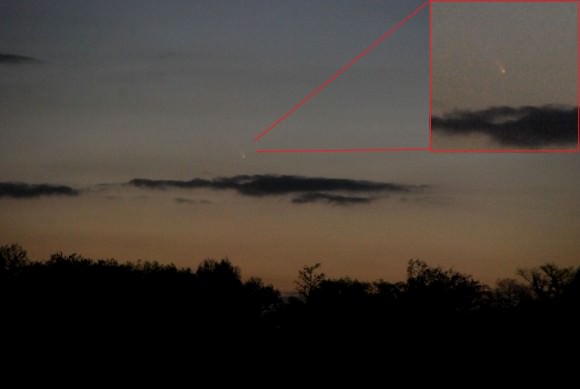
We were surprised by the star-like appearance of the coma, about +1st to 2nd magnitude with a tiny fan-shaped tail. The comet was visible in binoculars only (I used our trusty pair of Canon 15×45 Image-Stabilized binocs for the task) and I couldn’t yet pick out the comet with the naked eye.
Several sightings westward followed. Clay Davis based in Santa Fe, New Mexico noted a visual magnitude of -0.5, saying that PanSTARRS was “Brighter than Mars” at magnitude +1 but “A challenge to keep in view.” Note that observer estimations of the brightness of comets can vary based on local sky conditions. Also, unlike a pinpoint star, the brightness of comets extends over its visible surface area, much like a faint nebula. The first sightings of the comet for many observers has been contingent on the weather, which can trend towards overcast for much of North America in early March. From our +28.5° northern latitude vantage point here just north of Tampa Bay Florida we had about a 10 minute window from when the sky was dark enough to spy PanSTARRS before it set below the local horizon.
Here are a few more images from Universe Today readers:
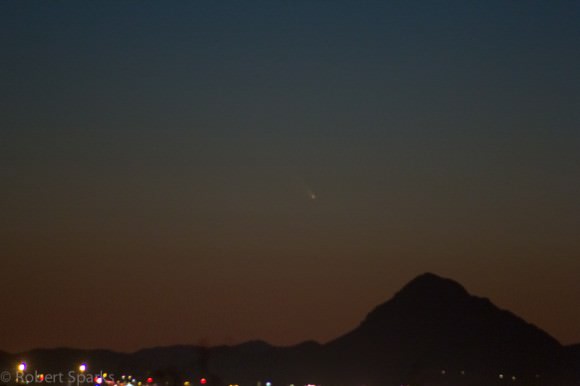
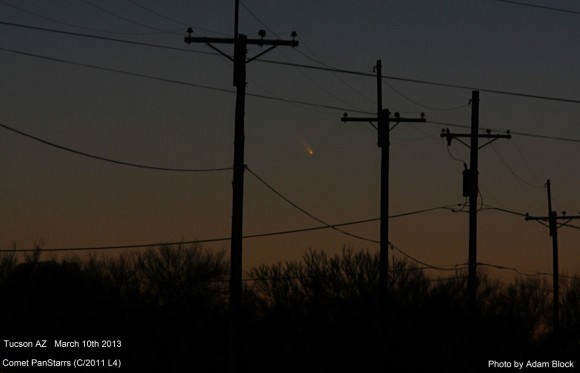

To see the comet we suggest;
First naked eye sightings of the comet for U.S. and European latitudes should be forthcoming over the next few evenings. PanSTARRS just passed perihelion yesterday on March 10th at 0.3 Astronomical Units from the Sun (or 46.5 million kilometres, just inside the orbit of Mercury).
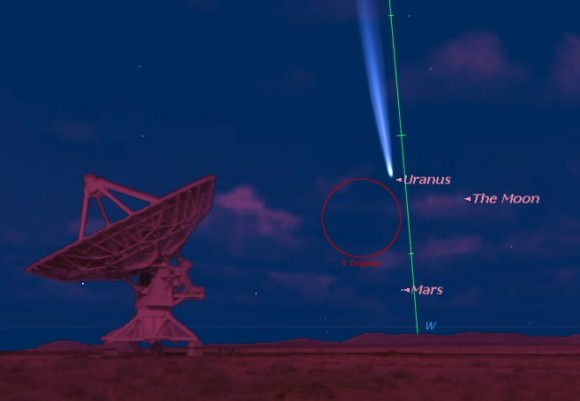
And Comet PanSTARRS may put on its best show over the next few nights. The Moon reaches New phase today at 3:51PM EDT/ 19:51 UT and starts lunation number 1116. On the next few evenings, the slim crescent Moon will slide by Comet PanSTARRS. Look for the 2% illuminated Moon 5° to the lower right of the comet on the evening of Tuesday March 12th. On the next evening, the 5% illuminated Moon will be 9° above Comet PanSTARRS on Wednesday, March 13th. The age of the Moon will be 28 hours old on Tuesday evening and 52 hours on Wednesday the 13th respectively, an easy catch. The Moonwatch website is a great place to check for those early lunar crescent sighting possibilities worldwide. Note that Comet PanSTARRS also passes less than 30’ from the planet Uranus (about the diameter of the Full Moon) on the evening of the 12th at 8 PM EDT/24UT. +6th magnitude Uranus may just be visible near the head of the comet using binoculars or a small telescope. Keep in mind, they just appear to be close as seen from our Earthly vantage point. PanSTARRS is currently 1.1 A.U.s from the Earth, while Uranus is on the other side of the solar system at 21 A.U.s distant!
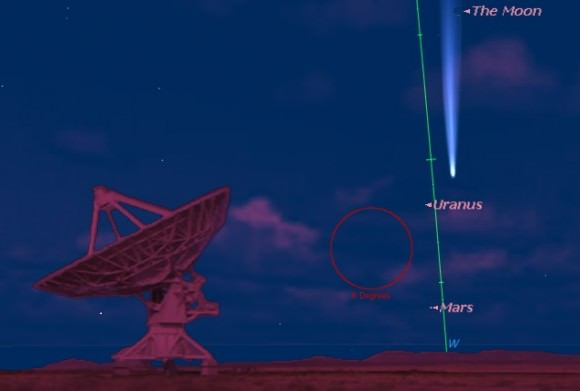
PanSTARRS also crosses the Celestial Equator today on March 11th and the Ecliptic on March 13th. Observers from dark sky sites may get the added bonus of the zodiacal light, a true photographic opportunity!
Spacecraft studying the Sun are also giving us views of Comet PanSTARRS from a different perspective. NASA’s twin STEREO A & B spacecraft are positioned to monitor the Sun from different vantage points along the Earth’s orbit. Often, they see comets as an added bonus. Comet PanSTARRS has just moved into the field of view of STEREO-B’s Heliospheric Imager and has given us amazing views of the comet and the Earth in the distance over the past week.
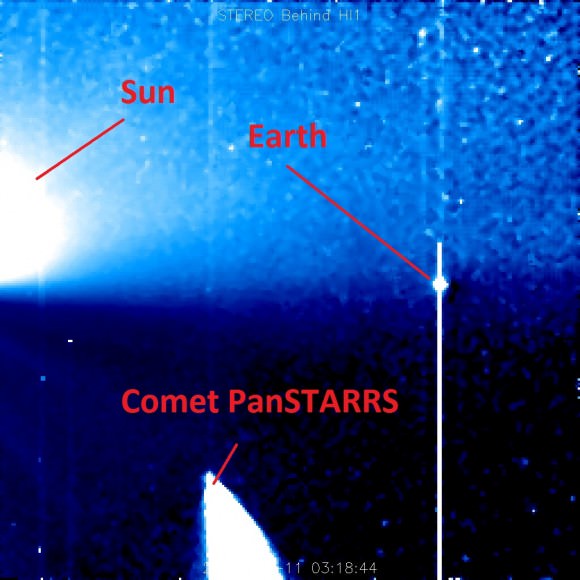
From STEREO, the remarkable fan-shaped dust tail of PanSTARRS stands out in profile. The dust tail of a comet always points away from the Sun. Driven by the solar wind, a comet’s tail is actually in front of it as it heads back out of the solar system! An ultimate animation of Comet PanSTARRS just came to our attention today via @SungrazerComets on Twitter;
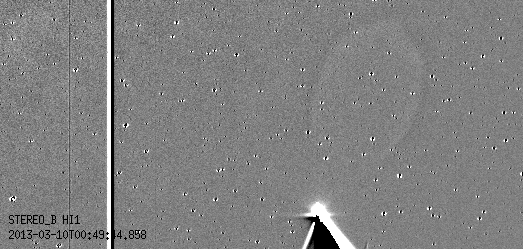
As of this writing, PanSTARRS seems to be performing as per predictions with an observed magnitude of around +1. The comet will continue on its northward trek, becoming a circumpolar object for observers based around latitude 50° north on April 2nd. Comet PanSTARRS should dip back below +6th magnitude around April 15th.
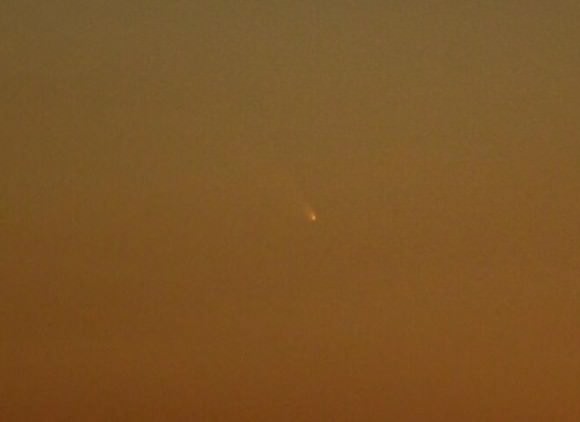
But this is but Act One in a forecasted three act cometary saga for 2013. Comet C/2012 F6 Lemmon will grace early dawn skies in April for northern hemisphere observers, and then all eyes will be on Comet C/2012 S1 ISON for the hoped for grand finale later this year. Interestingly, ESA’s Solar Heliospheric Observatory will get a look at this sungrazing comet as it passes through its LASCO C3 camera’s field of view. Clear skies, and may 2013 go down as the Year of the Comet!
-Check out photos of Comet PanSTARRS and more being added daily to the Universe Today’s Flickr gallery.
As reported here on Universe Today last week, the SETI Institute has invited the public to vote on the names of Pluto’s 4th and 5th moons. Discovered in 2011 and 2012 respectively, researcher and co-discoverer Mark Showalter will take these names before the International Astronomical Union (IAU) after voting closes on February 25th, 2013.
But days after the polling opened, a curious twist in the tale occurred that Star Trek’s Mr. Spock would only describe as “Fascinating.”
William Shatner, James T. Kirk himself, proposed the name Vulcan for one of Pluto’s unnamed moons. Fans and Trekkies worldwide rallied, and as of writing this, Vulcan enjoys a comfortable lead over Cerberus and Styx which are vying for the 2nd place position.
This astronomical horse-race has the propensity to get interesting. In order to be considered, the IAU’s naming convention simply states “Those that share Pluto’s orbital rhythm take the name of underworld deities,” And the named moons of Charon, Nix & Hydra all follow this convention. Shatner’s case for Vulcan does cite the god as “The nephew of Pluto” in Roman mythology, but anyone who had studied Roman and Greek mythos knows that familial relations can be proven between nearly any given god and/or goddess.
Interestingly, Showalter turned down Shatner’s second Star Trek/mythological suggestion of Romulus, citing that Romulus and Remus are already the names of the moons of asteroid 87 Silvia. While the “double naming” of objects in the solar system isn’t unheard of, it may be a definite strike against a proposal. Cerberus, Orpheus, Hypnos & Persephone are all names in the running that are all also assigned to asteroids.
On February 14th, researchers “Opened up the Gates of Hell” a bit further and took more mythological nominations into the running, adding Elysium, Hecate, Melinoe, Orthrus, Sisyphus, Tantalus, Tartarus and Thantos into the fray. You can write-in candidates such as “Donald,” & “Goofy,” but these stand a proverbial snowball’s chance in Hades of being accepted. Perhaps the backing of a starship captain would help, if Adama or Han Solo were available for hire…
Still, one wonders if the name Vulcan will make it past the gate-keepers at the IAU. The IAU has sparked controversy surrounding Pluto before, in its 2006 decision that angered 5th graders everywhere when they demoted Pluto to dwarf planet status. No solar system body currently holds the name of Vulcan, although one hypothetical one once did; the tiny fleeting world that was once thought to be interior to Mercury’s orbit. Several astronomers even claimed to witness transits of the fleeting world across the face of the Sun, and up until the late 19th century, you could still find Vulcan in many astronomy texts. While the idea of Vulcan as a planet interior to Mercury is out (think of how many telescopes, both amateur and professional, now continuously monitor the Sun daily) it’s not out of the question that a small group of asteroids less than 10 kilometres in size tentatively dubbed “Vulcanoids” may still inhabit the space interior to Mercury.

But if nothing else, the poll is a fun exercise to watch as astronomy fans worldwide delve into mythological lore and dig out the names of obscure gods and goddesses. A similar debate on mythological merits swirled around the naming of the moon of dwarf planet Orcus, ultimately named Vanth in 2009.
While only two names will be selected for P4 & P5, the other denizens of the underworld may just get their day in July 2015 when NASA’s New Horizons spacecraft gives us the first close up look at Pluto and friends. Previous “first flybys” of other planets and asteroids have turned up new moons before, and Pluto may be no different.
“The discovery of so many small moons indirectly tells us that there must be lots of small particles lurking unseen in the Pluto system,” stated Harold Weaver of the Johns Hopkins University of Applied Physics Laboratory. Such debris will be a definite concern as scientists seek to thread the spacecraft’s trajectory past Pluto and its moons.
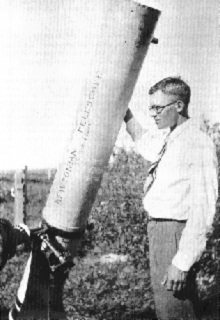
Discovered 83 years ago to the day on February 18th, 1930 by American astronomer Clyde Tombaugh, Pluto remains an uncharted corner of the solar system. Mr. Tombaugh passed away on January 17th, 1997, and an ounce of his ashes are aboard the New Horizons spacecraft which, along with the Pioneer 10 & 11 and Voyager 1 & 2 spacecraft, are escaping the solar system to wander along the galactic plane.
I’ve also got a proposal out in the running. By naming one of Pluto’s moons Alecto, we would honor Clyde with the inclusion of his initials “CT” on a moon. There is precedent for such a clever tribute before; James Christy honored his wife Charlene in the naming of Pluto’s large moon Charon and Mike Brown paid homage to his wife Diane by naming Eris’s moon Dysnomia.
Whatever happens, it’ll be interesting to see what transpires in the final names of P4/P5 are selected. Hopefully it won’t end in a showdown pitting Trekkies against the IAU… but don’t forget, the Trekkies did keep a television series on the air and got a space shuttle re-named!

[/caption]
Here’s an image from the Mars Global Surveyor that looks like a box of chocolates, with different shaped landforms, including a heart-shaped one. We’d like to take this opportunity on Valentine’s Day to express our love and appreciation to our readers, for allowing us to share the latest in space and astronomy news with you. And it’s true, you never know what you’re going to get; what news story is going to break or what amazing images we’ll share. But our heartfelt thanks for your readership, your comments, and for your regular visits to our website.
You can see the full image MGS Mars image here — which also includes some other heart-shaped craters and other unique landforms — and below is a rose-shaped pair of interacting galaxies, just for you.

[/caption]
There’s nothing like a dynamic solar system… and right now another planet is being heard from. According to various sources, a bright spot – possibly a developing storm – has been spotted on Uranus.
“Professional observers this morning (October 27) reported a very bright cloud on Uranus, using the Gemini telescope, and need amateur confirmation if possible, to obtain a rotation period.” says John H. Rogers, Jupiter Section Director, British Astronomical Association. “Near-infrared filters may have the best chance of detecting it. It was recorded in the 1.6 micron band, which is further into the IR than amateurs can reach, but your usual near-IR filters might be successful. I think that methane filters are not especially promising, as these clouds on Uranus are overlaid by a methane-rich layer of atmosphere, but would be worth trying anyway. Anyone who has a 1-micron filter should have a go too.”
At this point in time, information is limited, but professional images taken using the 8.1-metre Gemini Telescope North on Hawaii have recorded a region said to be ten times brighter than the planetary background. The bright spot is believed to be attributed to methane ice. ““This is an H-band image, centered at 1.6 microns, close to the wavelength of maximum contrast for such features. Its contrast will decrease with decreasing wavelength, and will likely not be detectable by amateur astronomers, except possibly at the longer CCD wavelengths where the Rayleigh scattering background can be suppressed.” says Larry Sromovsky, of the University of Wisconsin-Madison. “Looking with a methane band filters at 890 nm might be productive, especially if the feature continues to brighten.”
“The feature is not very large; instead its prominence is due to its high altitude, placing it above the intense absorption of methane in the deeper atmosphere. This is much higher than the 1.2-bar methane condensation level and thus it is expected to be predominantly composed of methane ice particles.”
Dr Sromovsky added: “The latitude of the feature is approximately 22.5° north planetocentric, which is a latitude nearly at rest with respect to the interior. So it should rotate around Uranus’ axis with nearly a 17.24-hour period. At the time of the image, the feature’s longitude was 351° West. That could change slowly in either direction.
“The low latitude is unusual. Previous exceptionally bright cloud features on Uranus were at close to 30° North, both in 1998 (Sromovsky et al. 2000, Icarus 146, 307-311) and in 2005 (Sromovsky et al. 2007, Icarus 192, 558-575). The 2005 feature oscillated ±1° about its mean latitude. The new feature might also oscillate in latitude, in which case its longitudinal drift rate might also vary with time.”
Hang in there, UT readers! Right now we have two of our best astrophotographers doing their best to give us an exclusive look! This page will be updated as more information becomes available.
Partial Quote Source: Skymania News Release.
[/caption]
For those of us who have dreamed over the stars for years while reading Sky & Telescope magazine, we respectfully remember Leif J. Robinson, who served for 20 years as Editor in Chief. He passed away Sunday at the age of 71 at his home in Costa Rica.
According to the S&T Press release, Robinson worked 38 years on the staff of Sky & Telescope and served as Editor in Chief from 1980 to 2000. Sky & Telescope is a monthly magazine based in Cambridge, Massachusetts. First published in November 1941, the magazine is approaching its 70th anniversary, and it remains the world’s most influential popular magazine about astronomy.
“Leif was a towering figure in the history of Sky & Telescope, and he tirelessly promoted the capabilities and achievements of amateur astronomers,” says current S&T Editor in Chief Robert Naeye. “During his tenure, S&T’s circulation grew significantly, and the magazine’s stature grew by leaps and bounds in the amateur and professional communities.”
“Every one of us who worked with Leif was inspired by his strong leadership, which emphasized journalistic and ethical principles of accuracy and integrity. These core values continue to guide everything we do at S&T,” adds Senior Editor Dennis di Cicco, who worked with Robinson at S&T for more than 25 years and remained in close contact after his retirement.
Robinson was born May 21, 1939, in Connecticut. He moved to Southern California in 1954 and became an active member in the Los Angeles Astronomical Society. Shortly thereafter he began writing articles for Sky & Telescope about lunar cartography.
While visiting his grandparents in Connecticut in 1962, he received a telegram offering him a job at S&T. Robinson initially planned to reject his offer so he could complete his studies at UCLA. But he decided to accept it after talking with S&T office staffer Caroline Nason, whom he would later marry. Robinson held several editorial positions until 1980, when he was named S&T’s third Editor in Chief following the sudden death of Joseph Ashbrook.
During his 38-year tenure on the editorial staff, Robinson became a champion of professional-amateur collaborations. S&T’s tradition of promoting such partnerships continues to this day. Seeing the potential of rapidly evolving digital technology in the 1980s, Robinson lobbied professionals to take amateur observations seriously, an effort that has been amply rewarded with major amateur contributions in many different fields, from discovering asteroids, comets, and supernovae to hunting for and characterizing planets around other stars. “I was one of the few people to walk in both communities with equal facility,” said Robinson. “I could relate CCD cameras to the amateur and I could relate science to the amateur.”
Robinson officially retired on December 31, 2000. But he remained active until the very end of his life. He wrote the popular “50 & 25 Years Ago” column for Sky & Telescope, and he continued to give talks to general audiences and amateur astronomers. From 2001 to 2005 he served on the Board of Directors of the Astronomical Society of the Pacific. Besides his career at S&T, Robinson was a world-class birdwatcher, and he authored the book Outdoor Optics.
“Today is a day of mourning at S&T, but we are also celebrating his life and contributions. Leif’s legacy will always remain a part of who we are and what we do,” says S&T Senior Editor Alan MacRobert, who worked with Robinson for 18 years.
Robinson is survived by his second wife “Ollie,” son Leif, Jr., and daughter Kara.
2010 was packed with interesting, exciting and breakthrough events and discoveries. We asked you to vote on the top 10 stories of the year, and below are the results. Some of you asked how we chose the 17 news stories to pick from and perhaps thought we missed out on some rather important astronomical discoveries of the year. The stories to vote on were chosen based on the “most viewed” articles in 2010 from our Google Analytics, and some were single articles, while some were a combination of articles on the same topic (for example, there was lots of exoplanet news this year). The survey was done with “Survey Monkey,” which worked out great. Thanks to everyone for the kind comments on the survey, which ranged from “Keep up the great work” to” Love Ya!! Such a fantastic articles, keep going!!” to “I want more cosmology on UT.”
We’ll continue to do our best to provide great coverage on everything space and astronomy-related in the years to come, and, yes we hope to expand in different areas, too. Thanks to all our readers for your continued support and comments! Also, thanks to our excellent staff of writers who contributed news articles this past year: Tammy Plotner, Nicholos Wethington, Jon Voisey, Mark Thompson, Mike Simonsen, Steve Nerlich, Jason Rhian, Jean Tate, Ken Kremer, Mark Mortimer, Darnell Clayton, Ryan Anderson, and the Spacevidcast crew.
And now, without further ado, the Top 10 Stories of 2010, as chosen by our readers:
10. Bacteria Found that can Live on Arsenic
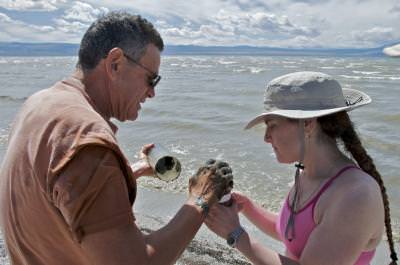
Despite the pre-announcement hype, NASA did not find life on another planet, but found life here on Earth that can live and grow almost entirely on a poison, arsenic, and incorporates it into its DNA. This announcement was soon met with opposition — not only for the science, but for how the hype got completely out of hand.
9. Solar Dynamics Observatory gives us a New View of the Sun
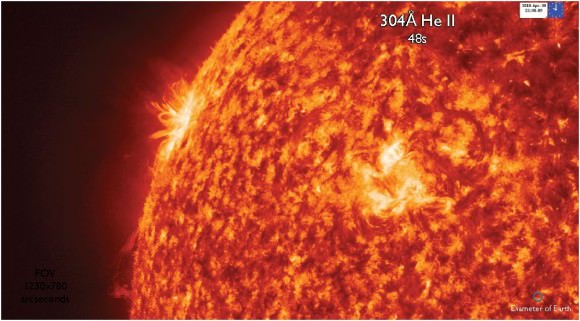
The Solar Dynamics Observatory launched in February of this year, and has been sending back a non-stop stream of data and images of the Sun like we’ve never seen before. SDO showed us almost up-to-the-minute views of a looping solar prominence, and have provided solar physicists with new details in helping them to understand the Sun.
Here are just a few articles we posted about SDO:
SDO Soars To Study the Sun
SDO Wows with First Light Images
Near Synchronous Explosions Connect Across Vast Distances on the Sun
8. Enceladus and the Tiger Stripe Jets

2010 was the year we learned more about the geysers on Enceladus, and the Cassini spacecraft sent back more astonishing images of the geysers and the “tiger stripe” regions from which the geysers emanate. One new study even suggested that an exotic form of warm, bubbly mineral water could be what feeds the mysterious jets.
Warm Perrier Ocean Could be Powering Enceladus Geysers
Enceladus the Jet Powered Moon
7. Hayabusa Returns To Earth with Samples of Asteroid
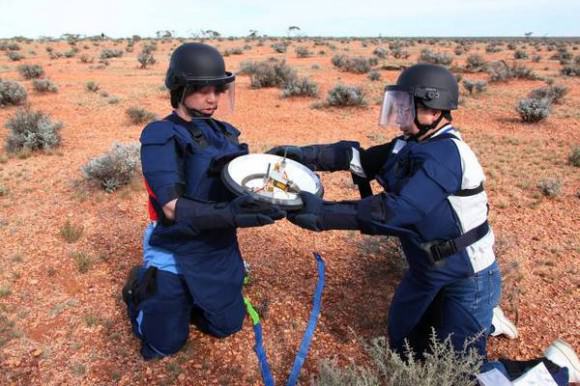
Japan’s little spacecraft that could returned to Earth this summer, making a fiery reentry in the Australian outback, overcoming several problems and obstacles. Later, scientists opened the sample return container revealing small particles which are likely from asteroid Itokawa.
6. Faster Than Light Pulsars Discovered

Observational data from nine pulsars, including the Crab pulsar, suggest these rapidly spinning neutron stars emit the electromagnetic equivalent of a sonic boom, and a model created to understand this phenomenon shows that the source of the emissions could be traveling faster than the speed of light. Researchers say as the polarization currents in these emissions are whipped around with a mechanism likened to a synchrotron, the sources could be traveling up to six times light speed, or 1.8 million km per second. However, although the source of the radiation exceeds the speed of light, the emitted radiation travels at normal light speed once it leaves the source. “This is not science fiction, and no laws of physics were broken in this model,” said John Singleton of Los Alamos National Laboratory at a press briefing at the American Astronomical Society meeting in Washington, DC. “And Einstein’s theory of Special Relativity is not violated.”
5. SpaceX Makes Great Strides in Commercial Space Endeavours.
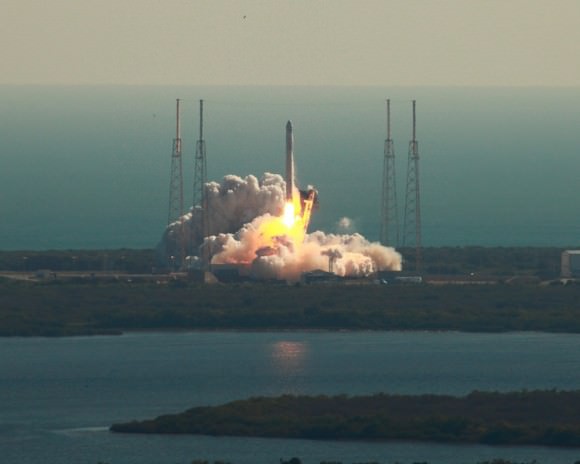
SpaceX’s launch of the Falcon 9 and Dragon capsule leads the way for commercial companies to bring cargo and crew the International Space Station, providing new access to space that may one day lead to a cheaper way for the general public to be involved in space travel.
One commenter said, “SpaceX has the opportunity to totally alter mankind’s access to space. I didn’t think they could do it, but they have.” Another said, “The potential of human space flight is the most important to me.”
4. More Mysteries of Titan Revealed
2010 was the year we learned more about Titan, as the Cassini spacecraft continues to send back more incredible images and data of Saturn’s largest Moon. Scientists were able to discern more about the weather on Titan, and they also saw clouds in the Moon’s atmosphere, plus one researcher found that Titan’s atmosphere could produce the building blocks of life, while another group found evidence of cryovolcanoes on Titan.
3. The Discovery (or not) of Exoplanet Gliese 581g
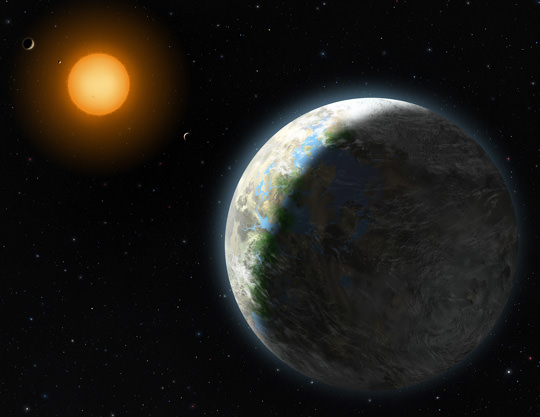
In September, astronomer Steven Vogt and his team announced what they claimed was the closest Earth-sized planet found so far that also exists in the habitable zone around its star. The planet, During a press conference, Vogt was quoted as saying, “Personally, given the ubiquity and propensity of life to flourish wherever it can, I would say, my own personal feeling is that the chances of life on this planet are 100 percent. I have almost no doubt about it.” Although the announcement created a lot of excitement, almost immediately after the announcement, another group of planet hunters said they could not find evidence of the planet in their data. Only further review will say for sure if Gliese 581g is there or not, but one thing is certain: the Gliese system is the most interesting planetary system we’ve found yet.
2. Exoplanets Galore!
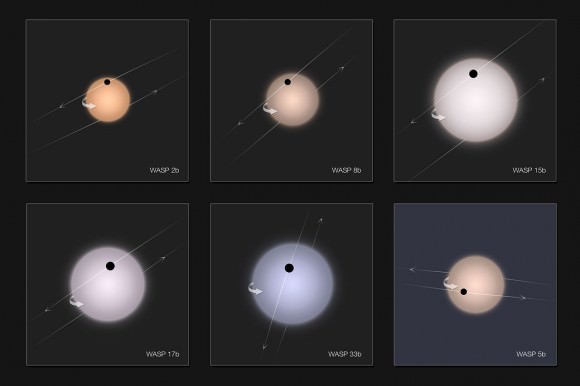
2010 saw a plethora of new exoplanet discoveries, including the first four-planet system that was imaged, the Kepler mission which found 750 exoplanet candidates, the observation of the atmosphere of aso-called “Super-Earth“, and the discovery of what astronomers think is the “youngest” exoplanet.
One commenter said, “Exoplanet science and discovery has the potential to alter our fundamental views not only of the universe but our place within it. It will affect all of mankind one day.”
Jon Voisey has written several articles on extra solar planets recently. You can read all about them under the category of of “Exoplanet.”
And the #1 story of 2010:
1. Radar Images Reveal Tons of Water Likely at the Lunar Poles

The Mini-SAR radar instrument on the Chandrayaan-1 spacecraft and the Mini-RF instrument on the Lunar Reconnaissance Orbiter are revealing there are likely massive amounts of water in the permanently shadowed craters at the poles, with over 600 million metric tons at the north pole alone. “If that was turned into rocket fuel, it would be enough to launch the equivalent of one Space Shuttle per day for over 2,000 years,” said Paul Spudis, principal investigator for the Mini-SAR. He said the ice would have to be several meters thick to give this signature they are seeing.
This has huge implications for future human and robotic exploration of the Moon.
Thanks again for voting! Here’s a bar graph of the votes:
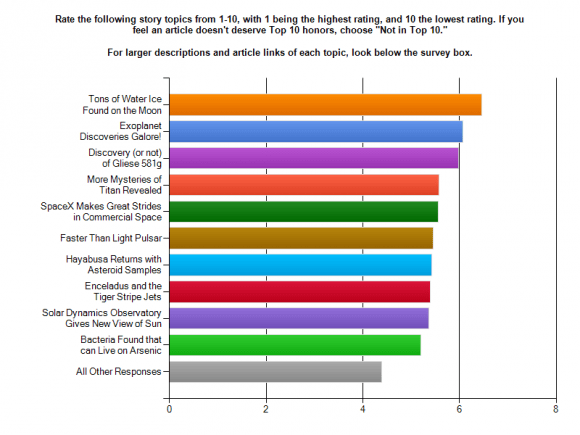
Vote for your favorite news stories of 2010 on Universe Today! Below is a survey of 17 news topics that we published this past year (some are single articles, some are a combination of articles, such as the X-37B space plane, which includes prelaunch, launch, on-orbit and landing articles.) The stories were chosen based on the “most viewed” articles this year. Below the survey is a review of the choices, with more information and links to articles. After reviewing the choices, rate each story topic, with 1 being the highest rating, and 10 the lowest rating. If you feel an article doesn’t deserve Top 10 honors, choose “Not in Top 10.” We’ll tally up the results and post the Top 10 list on Universe Today next week. Feel free to leave *short* comments either in the comment section or on the poll about why you chose as you did, and we’ll re-post some of the best. Make sure you click “Done” when finished. Thanks for taking part in this poll!
Create your free online surveys with SurveyMonkey, the world’s leading questionnaire tool.
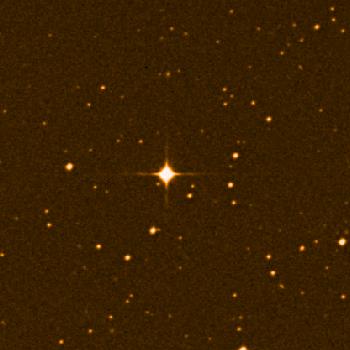
1. The Discovery (or not) of Exoplanet Gliese 581g
In September, astronomer Steven Vogt and his team announced what they claimed was the closest Earth-sized planet found so far that also exists in the habitable zone around its star. The planet, During a press conference, Vogt was quoted as saying, “Personally, given the ubiquity and propensity of life to flourish wherever it can, I would say, my own personal feeling is that the chances of life on this planet are 100 percent. I have almost no doubt about it.” Although the announcement created a lot of excitement, almost immediately after the announcement, another group of planet hunters said they could not find evidence of the planet in their data.
2. Radar Images Reveal Tons of Water Likely at the Lunar Poles
The Mini-SAR radar instrument on the Chandrayaan-1 spacecraft and the Mini-RF instrument on the Lunar Reconnaissance Orbiter are revealing there are likely massive amounts of water in the permanently shadowed craters at the poles, with over 600 million metric tons at the north pole alone. “If that was turned into rocket fuel, it would be enough to launch the equivalent of one Space Shuttle per day for over 2,000 years,” said Paul Spudis, principal investigator for the Mini-SAR.
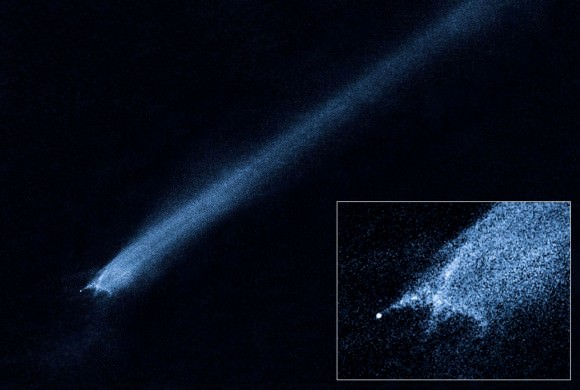
3. Asteroid Collision Seen by Ground-Based Observatories and Hubble
We reported that on January 6, 2010, ground-based observatories spotted evidence of an asteroid collision in the asteroid belt. Then in February, the Hubble Space Telescope took a look at the mysterious X-shaped debris pattern and trailing streamers of dust. With Hubble’s sharp vision, astronomers believe a head-on collision between two asteroids actually occured. Astronomers have long thought the asteroid belt is being ground down through collisions, but such a smashup has never been seen before.
4. Thirteen Things That Saved Apollo 13
To celebrate the 40th anniversary of the Apollo 13 mission, Universe Today interviewed NASA engineer Jerry Woodfill, who was on console in NASA’s Mission Evaluation Room the night the explosion occured in the Command Module of Apollo 13. Jerry came up with “13 Things That Saved Apollo 13,” discussing different turning points and technicalities of the mission. Jerry also answered readers questions, and we also were able to publish exclusive, never-before-seen images of the Apollo 13 Crew on the aircraft carrier after they safely splashed down. This series was a Universe Today exclusive.
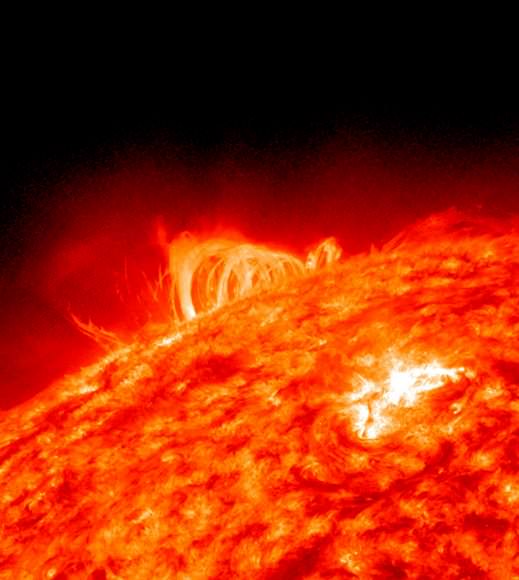
5. Solar Dynamics Observatory gives us a New View of the Sun
The Solar Dynamics Observatory launched in February of this year, and has been sending back a non-stop stream of data and images of the Sun like we’ve never seen before. SDO showed us almost up-to-the-minute views of a looping solar prominence, and have provided solar physicists with new details in helping them to understand the Sun.
SDO Soars To Study the Sun
SDO Wows with First Light Images
Near Synchronous Explosions Connect Across Vast Distances on the Sun
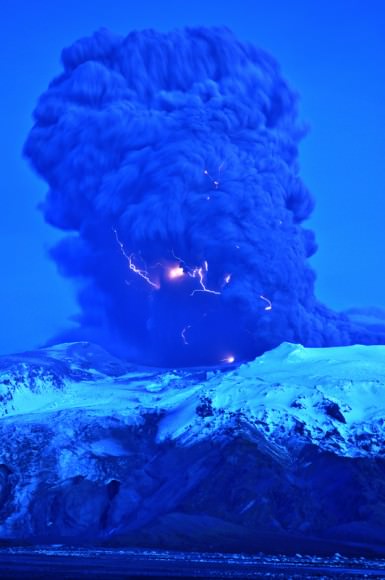
6. Eyjafjallajokull Volcano In Iceland Erupts
Astronomer Snaevarr Gudmundsson from Iceland was able to travel to within just a few kilometers from the Eyjafjallajokull volcano, and shared his incredible close-up images exclusively with Universe Today. “I stayed near the volcano from about 16:00 hours to 22:00 hours on Saturday and watched its impressive eruption,” Gudmundsson said in an email. “Amazing event, awesome explosions of 1200 °C hot magma reaching ice and water. I shot more than 550 images during these hours of continuous enjoyment. Sounds ridiculous but its ever changing appearance was never boring.” The volcano ash disrupted flights across northern Europe for several days. This article was one of our “most viewed” in 2010.
7. Obama Budget Proposal for NASA Ends Constellation Program; Proposes Asteroid Mission
In what is still an evolving story, President Obama proposed a new budget and destination for NASA, which has received both praise and harsh criticism since first announced on Feb. 1, 2010. After the Augustine Commission found that Constellation program was “fundamentally un-executable,” Obama’s new plan canceled the Ares rockets but add $6 billion for NASA over the next five years, focusing more on science and technology development, as well as providing money for commercial space development. For human spaceflight, instead of returning to the Moon, an asteroid mission was proposed. There’s been no decision yet on a heavy lift program. Congress wrangled with varied versions and ultimately passed a bill similar to Obama’s original proposal, and Obama signed it, but Congress has yet to approve the overall budget.
NASA Budget Details: Constellation Canceled, But Where To Next?
Obama Compromises; Brings Back Orion, Heavy Lift Sooner
President Signs 2010 NASA Authorization Act
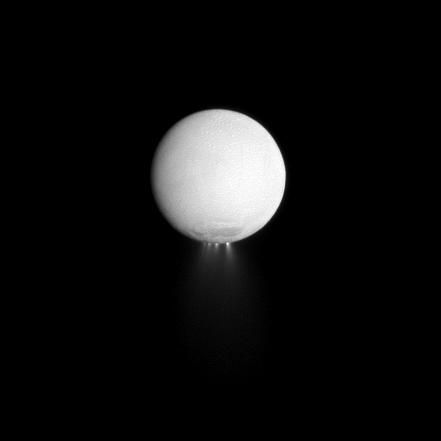
8. Enceladus and the Tiger Stripe Jets
2010 was the year we learned more about the geysers on Enceladus, and the Cassini spacecraft sent back more astonishing images of the geysers and the “tiger stripe” regions from which the geysers emanate. One new study even suggested that an exotic form of warm, bubbly mineral water could be what feeds the mysterious jets.
Warm Perrier Ocean Could be Powering Enceladus Geysers
Enceladus the Jet Powered Moon

9. SpaceX Makes Great Strides in Commercial Space Endeavours.
SpaceX’s launch of the Falcon 9 and Dragon capsule leads the way for commercial companies to bring cargo and crew the International Space Station.
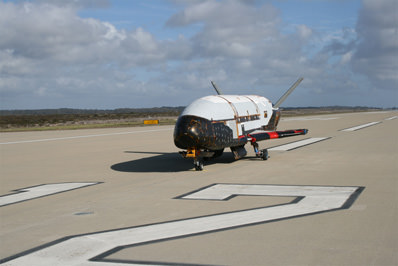
10. The Air Force’s launches the X-37b mini space plane.
In April, the Air Force launched the X-37B Space Plane, an unmanned version of the space shuttle. It’s mission was top secret, although amateur skywatchers had no trouble keeping track of the object in orbit, and Universe Today posted pictures of several sightings. We also had an article where Brian Weeden from the Secure World Foundation speculated on what the mini space plane could be doing in orbit. The X37B landed on Dec. 3, and we posted several post landing images and videos. The Air Force has still not disclosed the purpose of the long-duration mission.
11. Bacteria Found that can Live on Arsenic
Despite the pre-announcement hype, NASA did not find life on another planet, but found life here on Earth that can live and grow almost entirely on a poison, arsenic, and incorporates it into its DNA. This announcement was soon met with opposition — not only for the science, but for how the hype got completely out of hand.
12. Exoplanets Galore!
2010 saw a plethora of new exoplanet discoveries, including the first four-planet system that was imaged, the Kepler mission which found 750 exoplanet candidates, the observation of the atmosphere of aso-called “Super-Earth“, and the discovery of what astronomers think is the “youngest” exoplanet.

13. Faster Than Light Pulsars Discovered
Observational data from nine pulsars, including the Crab pulsar, suggest these rapidly spinning neutron stars emit the electromagnetic equivalent of a sonic boom, and a model created to understand this phenomenon shows that the source of the emissions could be traveling faster than the speed of light. Researchers say as the polarization currents in these emissions are whipped around with a mechanism likened to a synchrotron, the sources could be traveling up to six times light speed, or 1.8 million km per second. However, although the source of the radiation exceeds the speed of light, the emitted radiation travels at normal light speed once it leaves the source. “This is not science fiction, and no laws of physics were broken in this model,” said John Singleton of Los Alamos National Laboratory at a press briefing at the American Astronomical Society meeting in Washington, DC. “And Einstein’s theory of Special Relativity is not violated.”
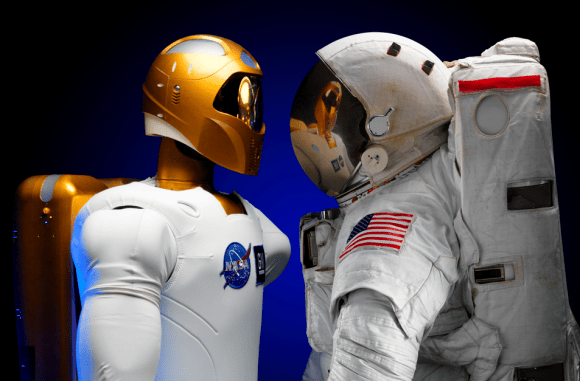
14. NASA Prepares to Send Humanoid Robot to Space Station
Robonaut 2, NASA’s second generation of dexterous robots with a human-like torso, will be heading up to the International Space Station on space shuttle Discovery’s final mission (currently scheduled for Feb. 2011, delayed from Nov. 2010. R2 captured the imaginations of space and science fiction fans, as it can work with tools and be manipulated to do many human tasks. For now, RS will work indoors at the ISS, but is envisioned to be able to do EVA work outside the station. Also going up to the ISS on STS-133 is the Permanent Multipurpose Module (PMM) a former Multi Purpose Logistics Module (MPLM) known as Leonardo. It was transformed to become a storeroom for supplies on the station. But it might also become a haven to get away from it all, and one manager thought it might become a sort of “Man Cave” for the ISS.
15. Lunar Elevator Could be Built within a Decade
This article created quite a bit of buzz on Universe Today. Entrepreneur Michael Laine believes a lunar elevator – a space elevator from the surface of the Moon – could be created with materials that are available now. With more research and the right amount of capital, Laine says a lunar elevator could be built within a decade.
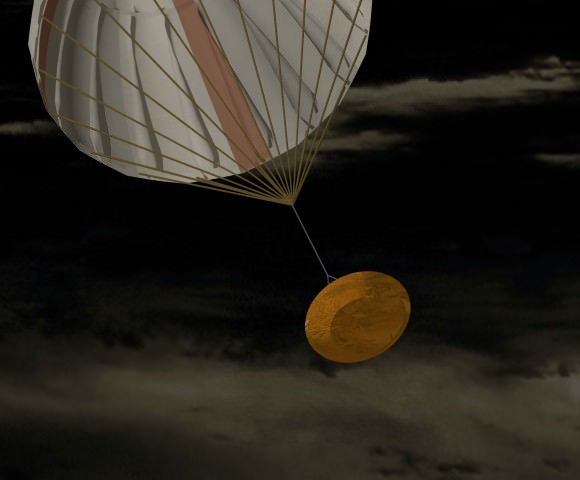
16. Hayabusa Returns To Earth with Samples of Asteroid
Japan’s little spacecraft that could returned to Earth this summer, making a fiery reentry in the Australian outback, overcoming several problems and obstacles. Later, scientists opened the sample return container revealing small particles which are likely from asteroid Itokawa.
17. More Mysteries of Titan Revealed
2010 was the year we learned more about Titan, as the Cassini spacecraft continues to send back more incredible images and data of Saturn’s largest Moon. Scientists were able to discern more about the weather on Titan, and they also saw clouds in the Moon’s atmosphere, plus one researcher found that Titan’s atmosphere could produce the building blocks of life, while another group found evidence of cryovolcanoes on Titan.
Working on the internet provides the opportunity to meet people from all around the world, and I’ve gotten acquainted with Lourdes Cahuich, an astronomy and science enthusiast and translator from Mexico and Tiare Rivera from Chile, who is the editor of the SETI Chile website. They regularly translate Universe Today articles (and articles and podcasts from many other English-language sites) and post them on their website in Spanish, making space and astronomy news more accessible to more of the world. They both are working on a series of interviews with people involved in space and astronomy outreach, and I am honored that Lourdes wanted to interview me! You can read the interview here in English, or if you prefer, here en Español. I reveal all about how and why I started writing, and how I ended up at Universe Today.
Above is the English version of SETI.CL’s promo video.
[/caption]
Congrats to our very own Anne Minard who has been named one of five Ted Scripps Fellows in Environmental Journalism! Anne will be moving to Colorado to attend a nine-month academic program for professional journalists at the University of Colorado – Boulder. The Fellowship immerses journalists in classes and research about environmental issues to help them gain a better understanding of this topic, allowing them to cover the environment more effectively and enrich the public’s knowledge of this crucial subject. Anne will undoubtedly be busy with this new endeavor, but she hopes to keep her toe in the water here at Universe Today and share what she is learning. Congratulations Anne!